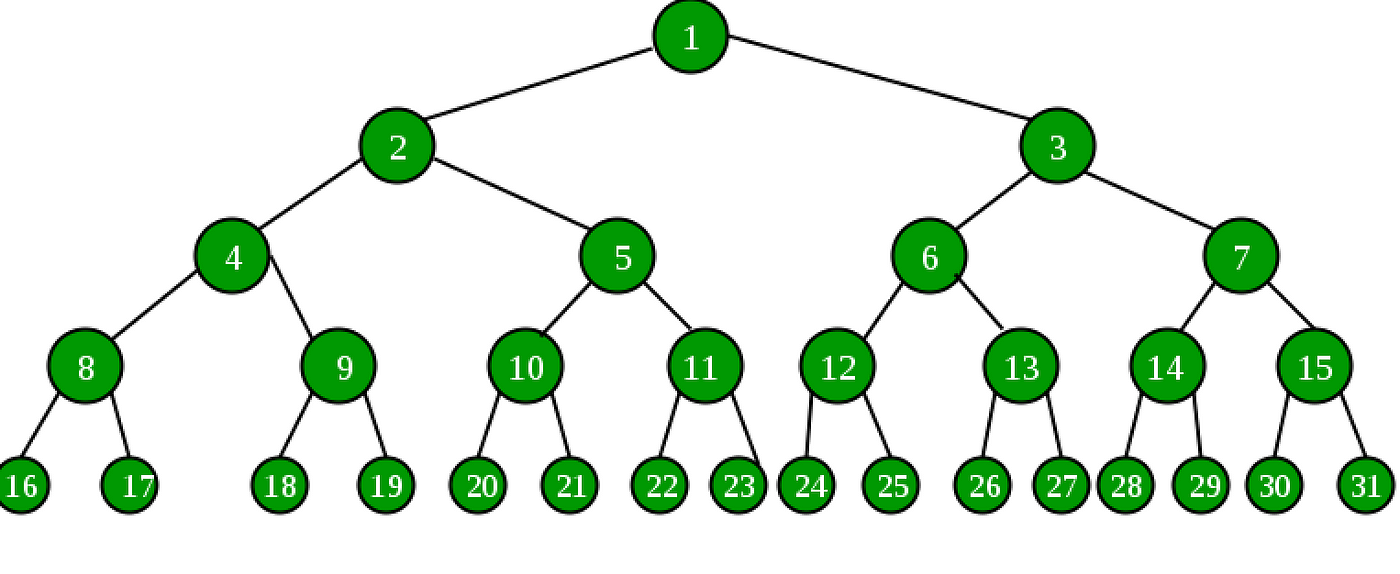1
The binary sequences in can be represented as subsets of , with the nth bit deciding on whether is in the subset.
1 a
1 b
1 c
Find an uncountable antichain in
Let represent , and represent . Let be the set of all sequences of s and s. Note that a bijection between and exists, so is uncountable. Also, no two elements in are comparable.
1 d
Solution using Dedekind cuts
We know that is countable. Let be a bijection. We know that every real number is uniquely determined by a Dedekind cut in . So, for , define
is uncountable, and associates each with a unique subset of such that whenever .
Alternate solution due to Negi
Associate each with a subset of like exemplified:
1 e
Solution using a tree structure
Construct a binary tree and associate each point with a natural number like so:

(The tree is infinite)
Now, with each node of the tree, associate a subset of which consists of all the numbers of the nodes in the path between the node and the root of the tree. For example, the subset associated with 26 would be . Consider the set of all sets associated with every node in the tree. The intersection of any two elements of this set must necessarily have a finite intersection, since the paths to the two nodes corresponding to the elements must diverge at some point.
Alternate solution due to Negi
Associate each with a subset of as exemplified:
2
2 a
Consider all the functions which have . Then, the function can decrease its value by 1 at most times. Thus, we can associate the function with a k-tuple which records when the function performs the k-th drop. If the function settles at a constant value , then we can fill the unused spots with zeroes. For example, the function
would be associated with the tuple . Note that is countable. We have an injection from the set of all non increasing functions from to to . Thus, the set in question is countable.
2 b
A non decreasing function from to can be bijected to . Associate each such function with the infinite tuple . Thus, the set is uncountable.
2 c
Let be the set of all injective functions form to . We can construct an injection from to like so: with , associate the function
is clearly injective, and unique to . Thus, , i.e, is uncountable.
2 d
Let be the set of all surjective functions from to . We can construct an injection from to like so: with associate a function like so:
Thus, , i.e, is uncountable.
2 e
A Cantor diagonalization argument is a simple way to show that the set of all bijections from to is uncountable.
Alternate solution using the Riemann rearrangement theorem
The Riemann rearrangement theorem states that for any conditionally convergent series (e.g., the alternating harmonic series ), the terms can be rearranged (via a permutation of ) to converge to any real number, or even diverge to .
By the above theorem, for every real number , there must exist at least one permutation such that
Thus, the set of all bijections from to is uncountable.
3
Consider the set of all binary sequences, . Replace with and with .
4
The Hausdorff maximal principle: Let be a partially ordered set. Then contains a maximal chain (i.e. a chain which is not contained in a bigger chain).
Let be the set of all chains in . Define a partial order on such that iff . Let be a chain in . Let . Any two elements in are in some , and are hence comparable, making a chain in , i.e. . It is evident that is an upper bound for . Thus, every chain in has an upper bound. From Zorn’s Lemma, has a maximal element, i.e, a chain which is not contained in any other chain.
5
Let be a filter on . We have to show that it is contained in an ultrafilter. Let be the set of all filters on which contain (are supersets of) . Define a partial order on by iff . Consider a chain in . Let . It is easily verified that is a filter on and contains , i.e. . Thus, every chain in has an upper bound. From Zorn’s lemma, must have a maximal element .
We will now show that is an ultrafilter. Suppose not. Let such that and . Note that for all , . Define . Clearly, . It is easy to verify that is a filter. Thus, and , which contradicts the maximality of .